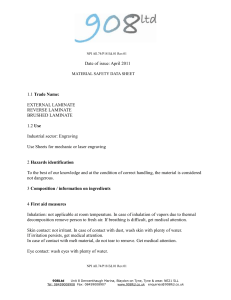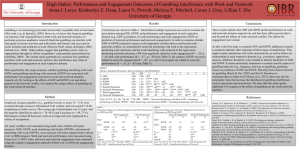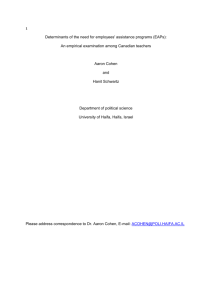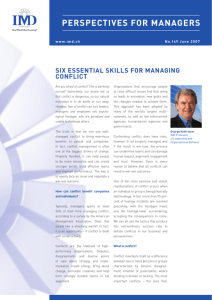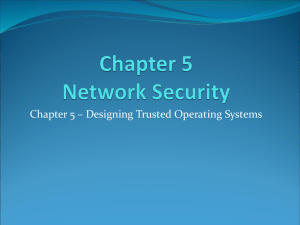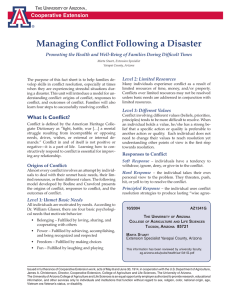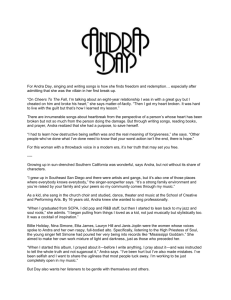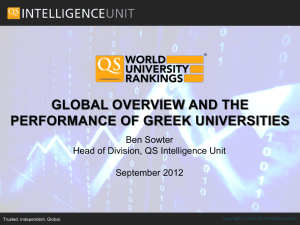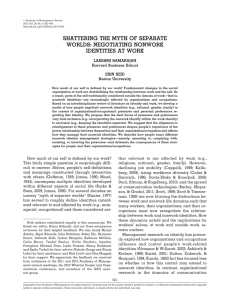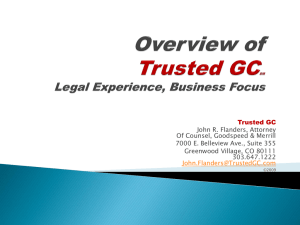Trust and distrust in organizafions – Emerging perspecfives
advertisement
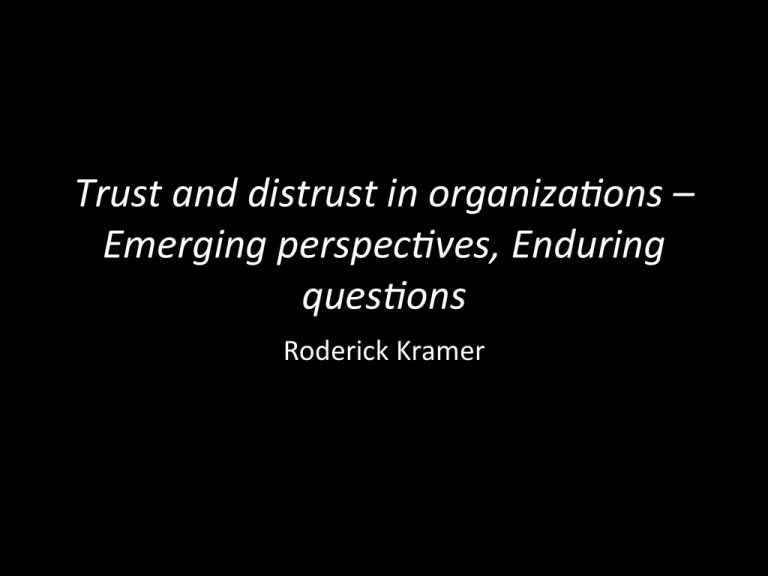
Trust and distrust in organiza.ons – Emerging perspec.ves, Enduring ques.ons Roderick Kramer Tillit som e1 psykologiskt 5llstånd • “expecta5ons, assump5ons, or beliefs about the likelihood that another’s future ac5ons will be beneficial, favorable, or at least not deterimental to one’s interests” (Robinson 1996, p. 576) • “socially learned and socially confirmed expecta5ons that people have of each other, of the organiza5ons and ins5tu5ons in which they live, and of the natural and moral social orders that set the fundamental understandings for their lives” (Barber 1983, p. 164–65). Trust as either • Instrumental or Influerad av ”ra5onal choice theory”. Dvs människor är ra5onella och beräknande i rela5on 5ll andra människor (Jmfr spelteori). U5från de1a perspek5v blir graden av 5llit 5ll den andra parten en del i e1 större beslutsunderlag när olika handlingsalterna5v övervägs. • social Kri5k mot övertro 5ll vår förmåga 5ll ra5onellt handlande. Föreslår istället en ”rela5onal model of trust”. Mer fokus på det sociala i rela5on 5ll det instrumentella. Emo5on snarare än kogni5on. Bases of trust within organiza5ons • • • • • Disposi5onal (trait) History-­‐based (learned thru interac5on) Category-­‐based Role-­‐based Rule-­‐based Distrust • “lack of confidence in the other, a concern that the other may act so as to harm one, that he does not care about one’s welfare or intends to act harmfully, or is hos5le” (Grovier 1994, p. 240) • Caused by unmet or violated expectancies Technologies that undermine trust • monitoring and surveillance can diminish trust within an organiza5on. • when people think their behavior is under the control of extrinsic mo5vators, intrinsic mo5va5on may be reduced • monitoring and surveillance systems com-­‐ municate to employees that they are not trusted, poten5ally breeding mistrust and resentment in return. Work-­‐nonwork conflict and job stress aomng virtual workers Sumita Raghuram and Ba5a Wisenfeld Problembakgrund och hypotes • Virtual work may decrease job stress by increasing flexibility and thus reducing work-­‐ nonwork interference and overload. However, virtual work may conversely increase job stress by elimina5ng the boundaries that separate work and nonwork domains • Virtual employees’ remoteness and isola5on, combined with their tendency to rely on lean communica5on media (such as e-­‐mail), increases the likelihood of misunderstandings and dis-­‐ trust rela5ve to employees who are not remote • Hypothesis 2b: Trust will be nega5vely related to work-­‐ nonwork conflict. Opera5onalisering • Four item scale • overall measure of trust rather than assess-­‐ ing the many specific determinants of trust. • Two items measured the extent to which the individual trusted his/her supervisor and peers, and two items measured the extent to which virtual workers perceived that their su-­‐ pervisor and peers trusted them (alpha = .86). An example is “I trust my supervisor.” Resultat • Contrary to our expecta5ons, individual factors (self-­‐efficacy and structuring behavior) and trust were no less important for those who work virtually less extensively than for more extensive virtual workers. Apparently, these factors are equally relevant to all individuals, regardless of the extent of virtual work, in minimizing their experience of work-­‐ nonwork conflict.
